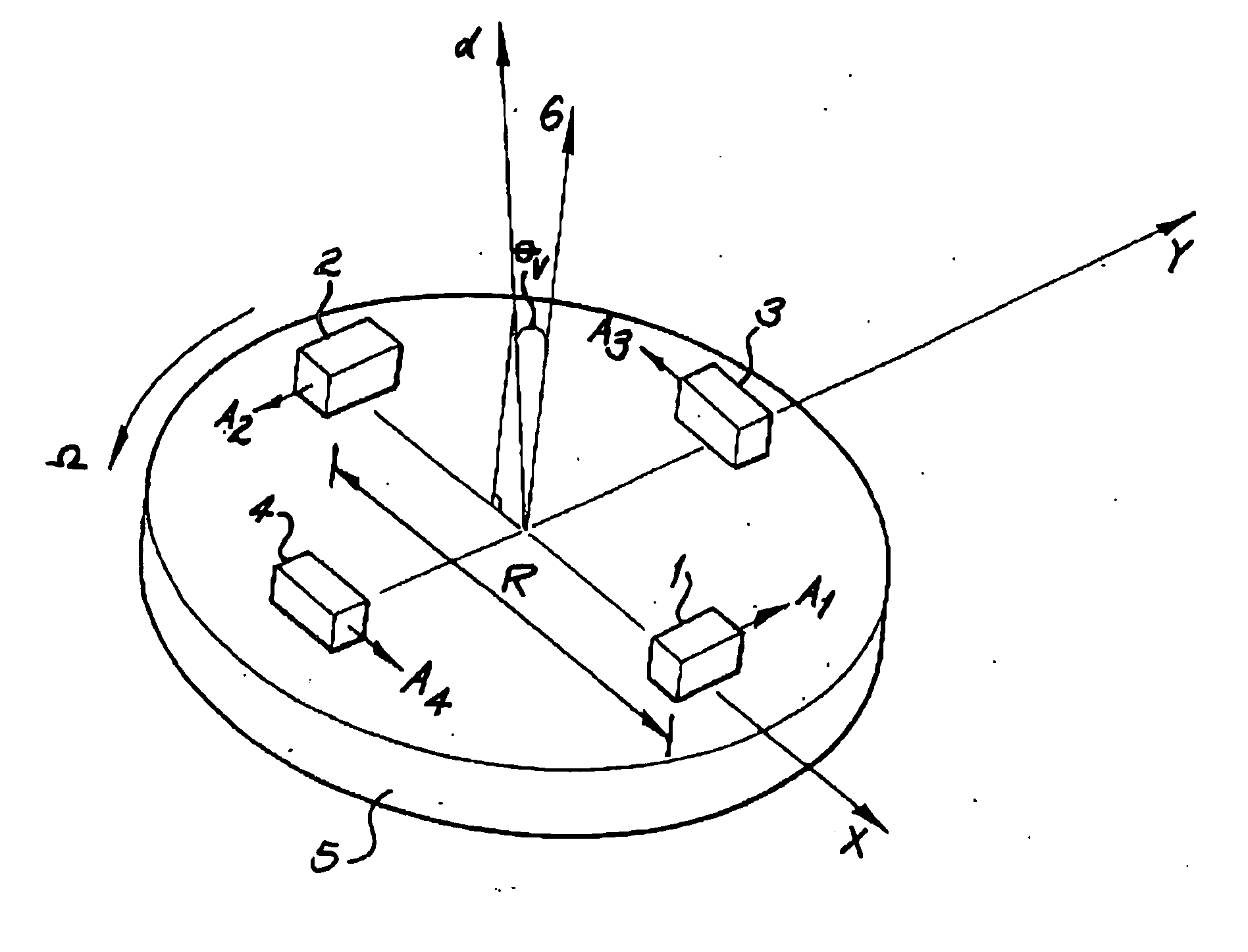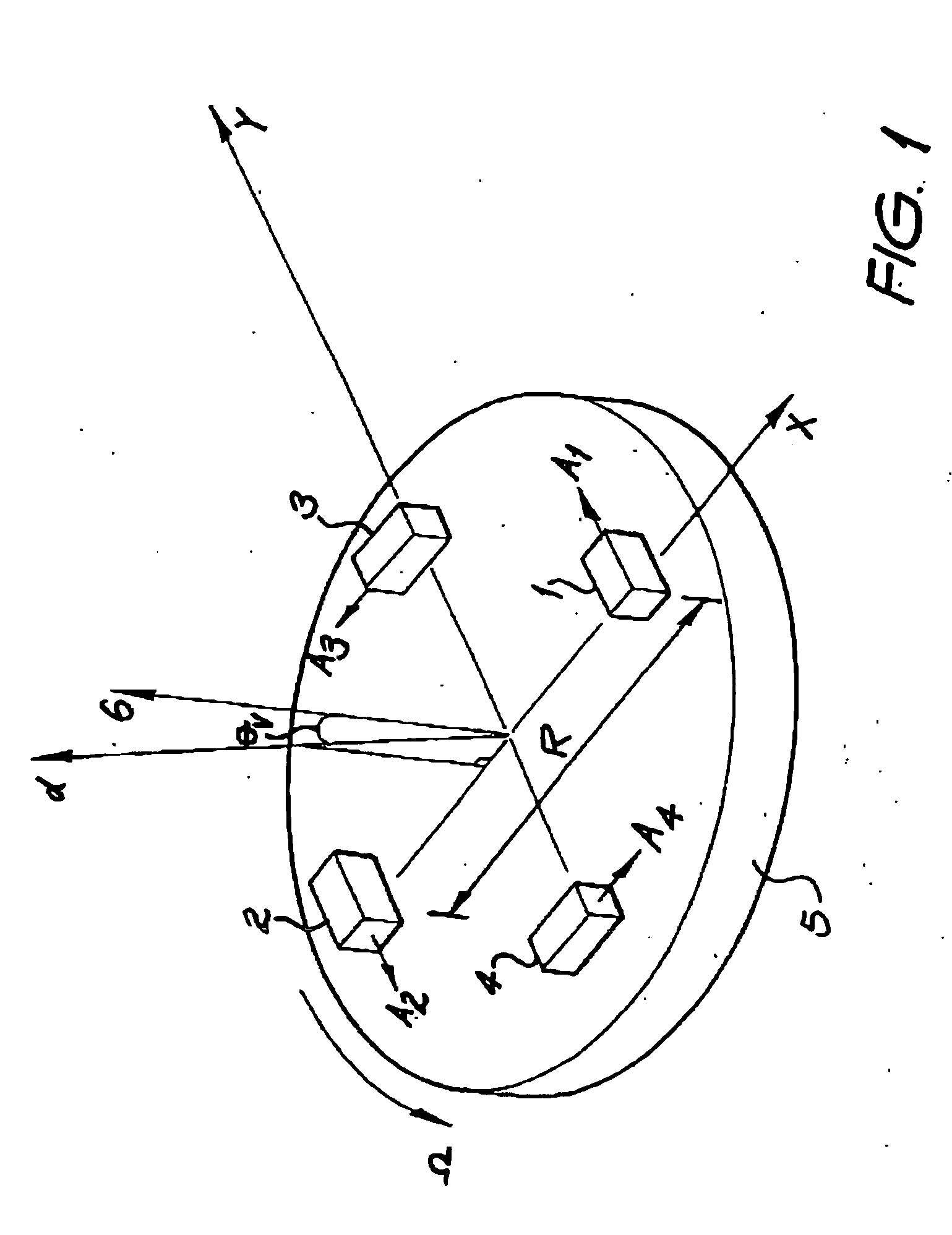Enhancement of sensors for airborne operation
a technology of airborne operation and sensors, applied in the field of improving the performance of gravity gradient instruments, can solve the problems of residual sensitivity of ggi to motion, noise, etc., and achieve the effect of reducing noise and reducing noise on the output of gravity gradient instruments
- Summary
- Abstract
- Description
- Claims
- Application Information
AI Technical Summary
Benefits of technology
Problems solved by technology
Method used
Image
Examples
Embodiment Construction
[0025] Referring first to FIG. 1, the GGI consists of four, 1, 2, 3 and 4 (or eight) high quality, low noise, matched accelerometers mounted on a block 5 as shown in FIG. 1. Each of the GGI accelerometers has mechanisms for trim adjustment of: the accelerometer scale factor, and the alignment of the accelerometer sensitive axis. The alignment trim adjustment is nominally about the accelerometer output axis.
[0026] The nominal configuration of the GGI accelerometers has the accelerometers 1, 2, 3 and 4 equally spaced on the circumference of a circle, with their sensitive axes tangential to the circle. The block is rotated about an axis 6 (the spin axis) which is nominally and to a high precision perpendicular to the plane of the circle, and passes through the centre of the circle. The rotation rate (Ω) is usually 0.25 Hz and can vary from 0.25 Hz to 1.67 Hz.
[0027] The outputs of the four accelerometers are combined by a summing amplifier 7 as shown in FIG. 2. This combining of the o...
PUM
 Login to View More
Login to View More Abstract
Description
Claims
Application Information
 Login to View More
Login to View More - R&D
- Intellectual Property
- Life Sciences
- Materials
- Tech Scout
- Unparalleled Data Quality
- Higher Quality Content
- 60% Fewer Hallucinations
Browse by: Latest US Patents, China's latest patents, Technical Efficacy Thesaurus, Application Domain, Technology Topic, Popular Technical Reports.
© 2025 PatSnap. All rights reserved.Legal|Privacy policy|Modern Slavery Act Transparency Statement|Sitemap|About US| Contact US: help@patsnap.com



